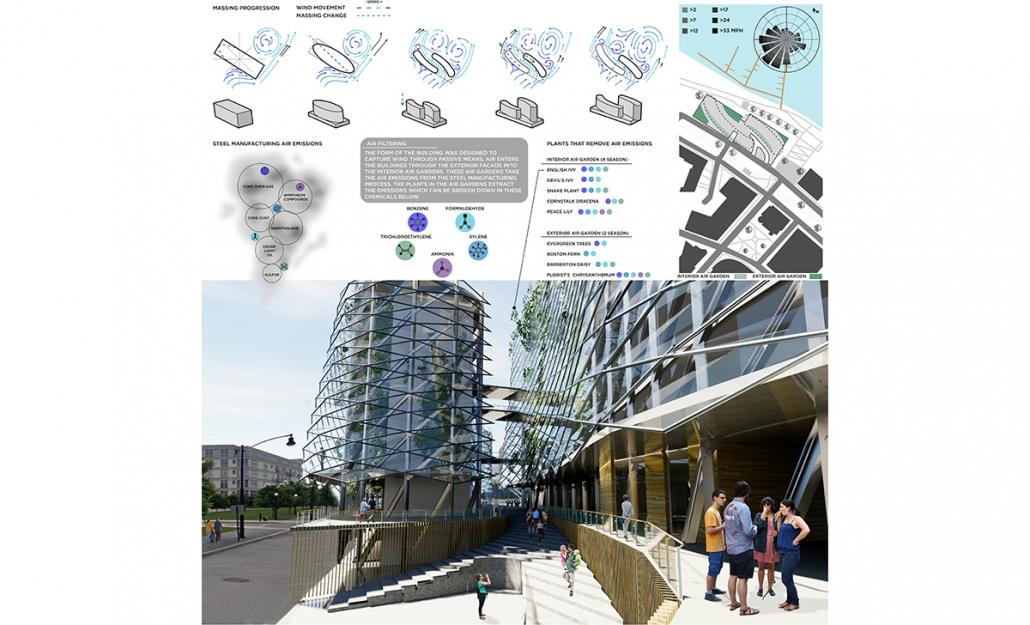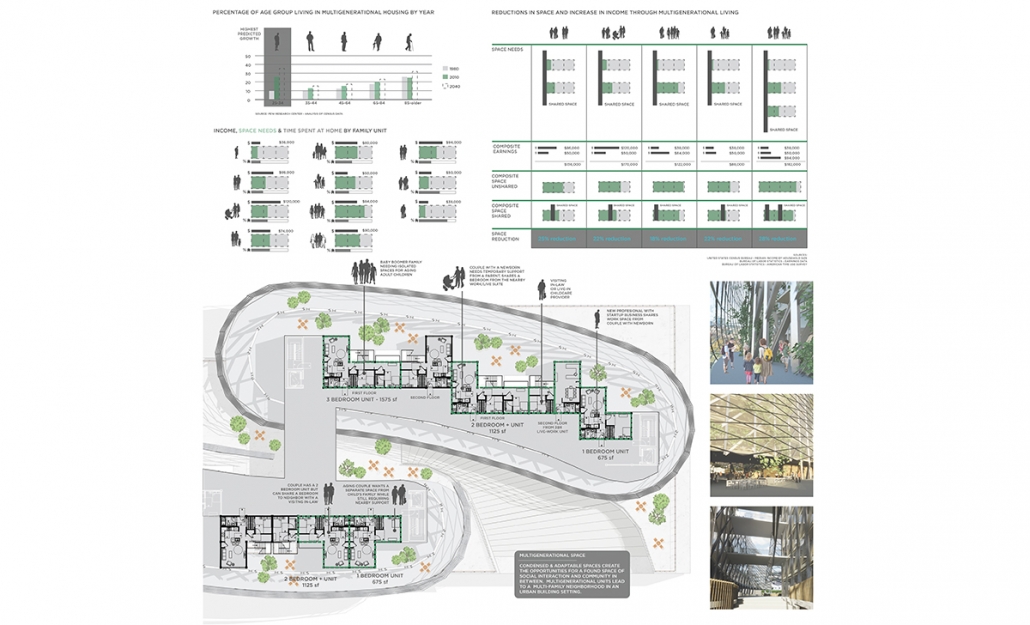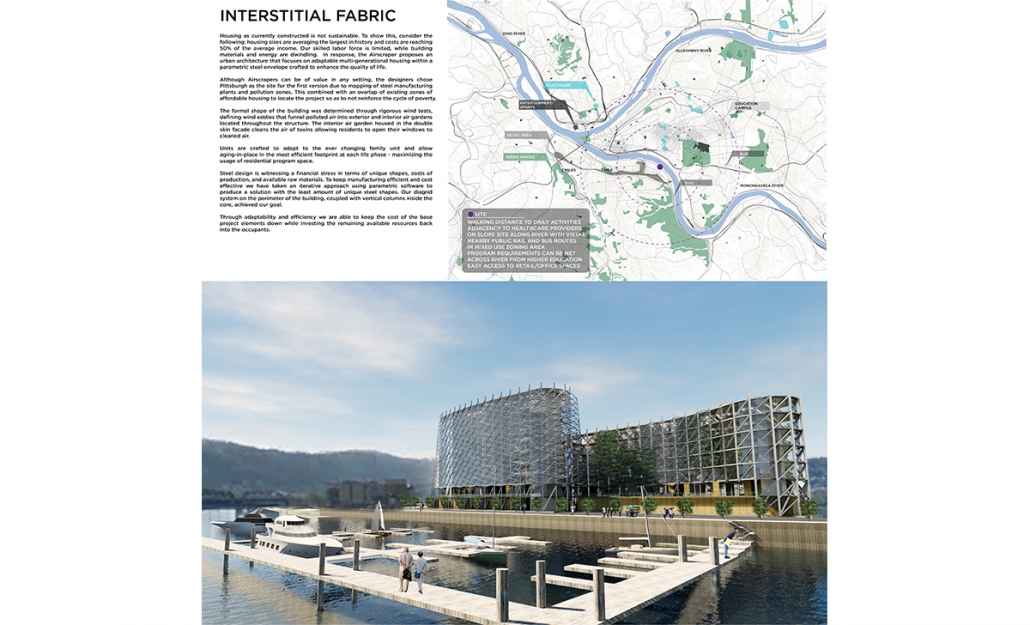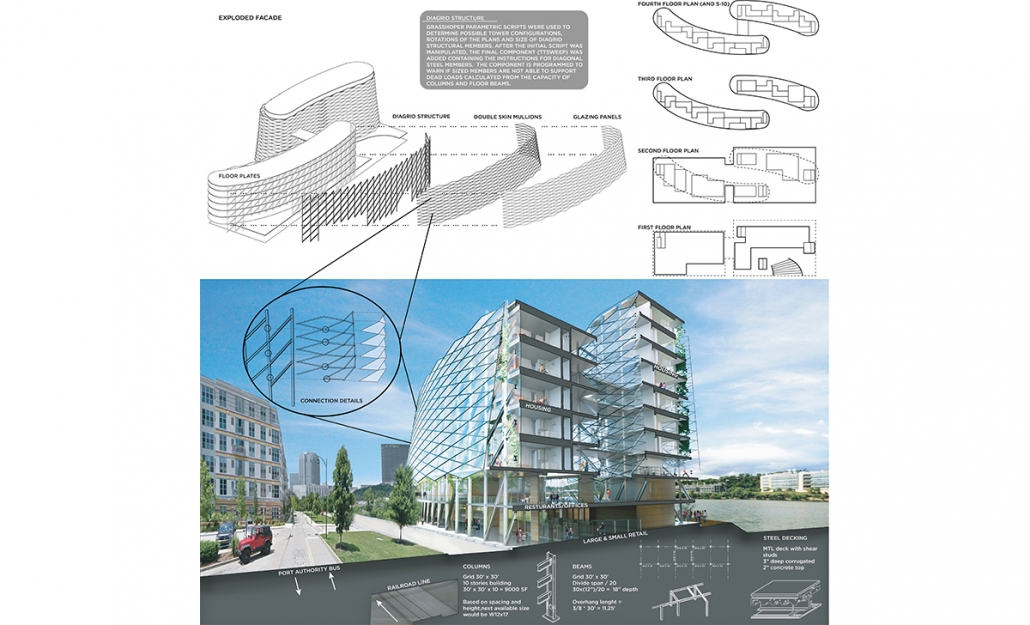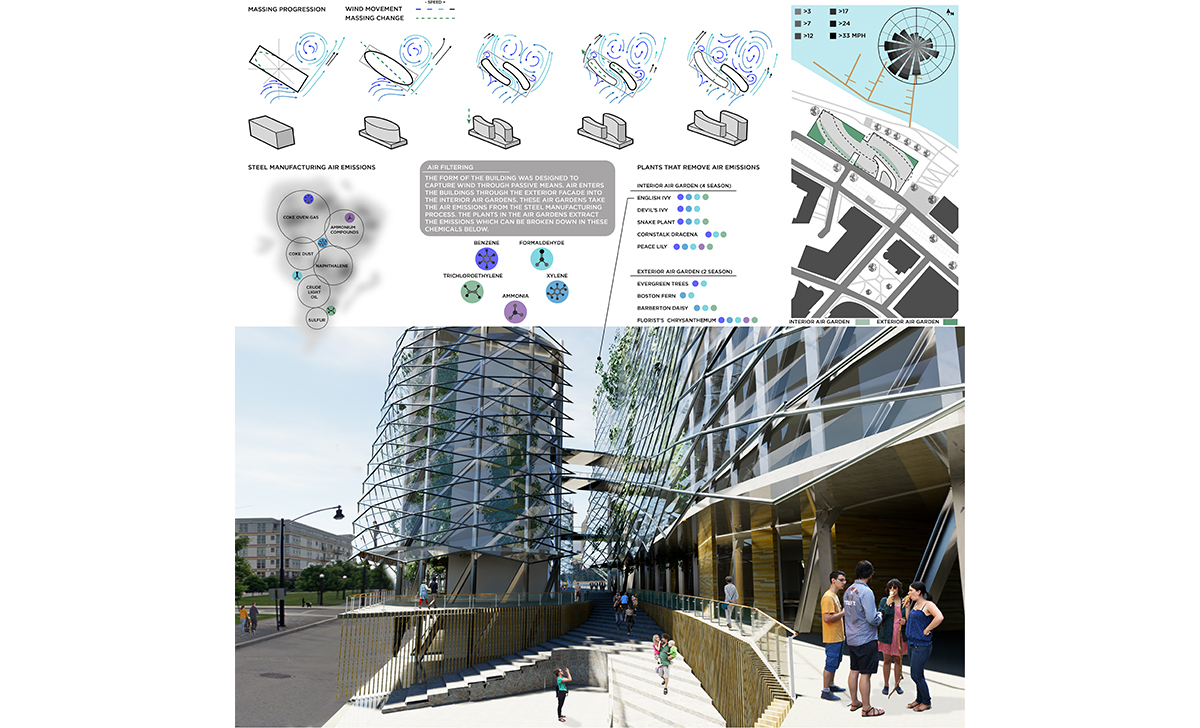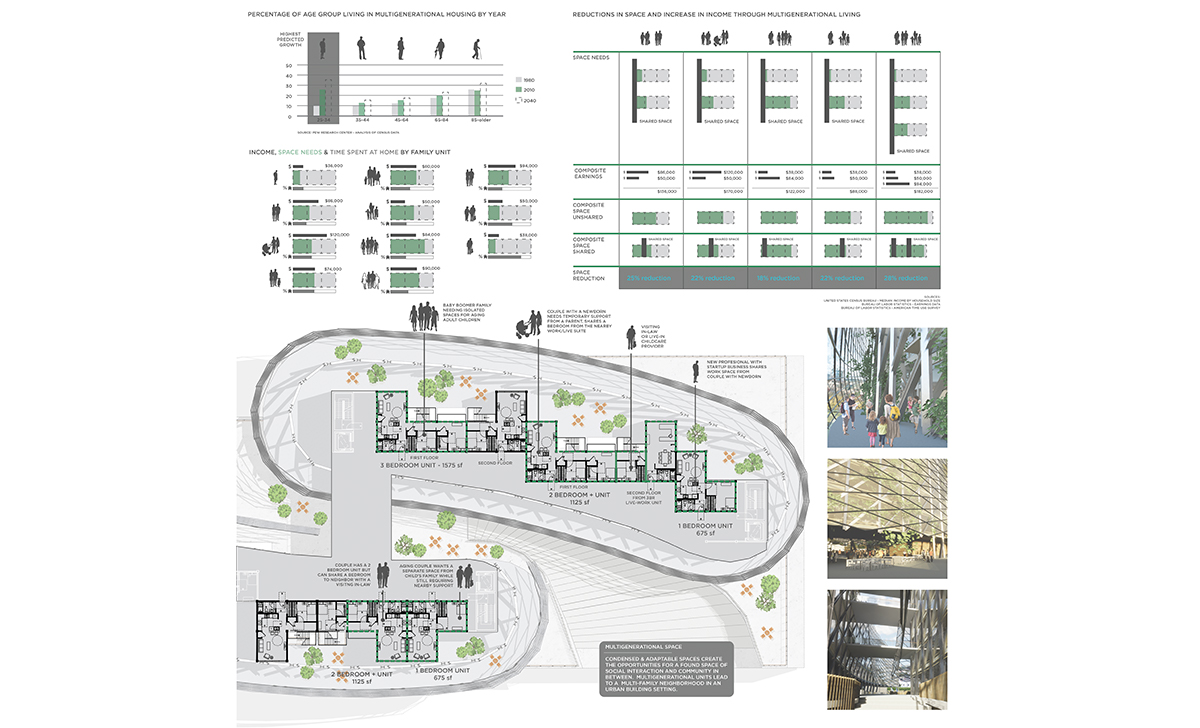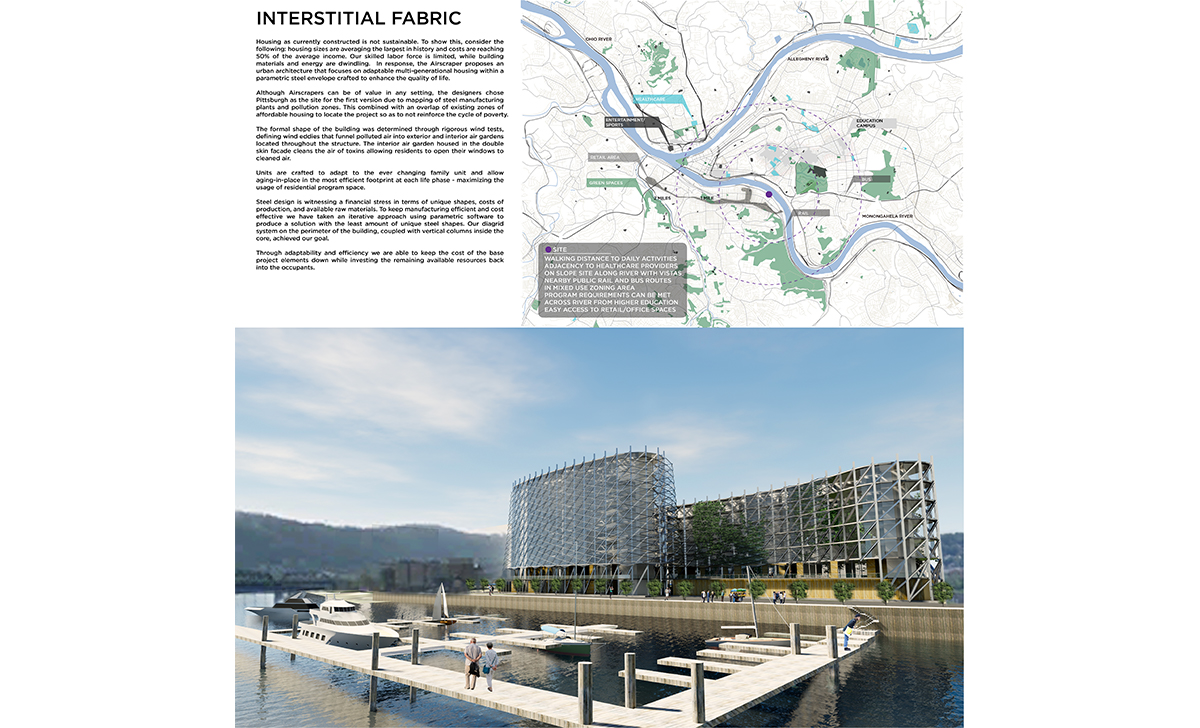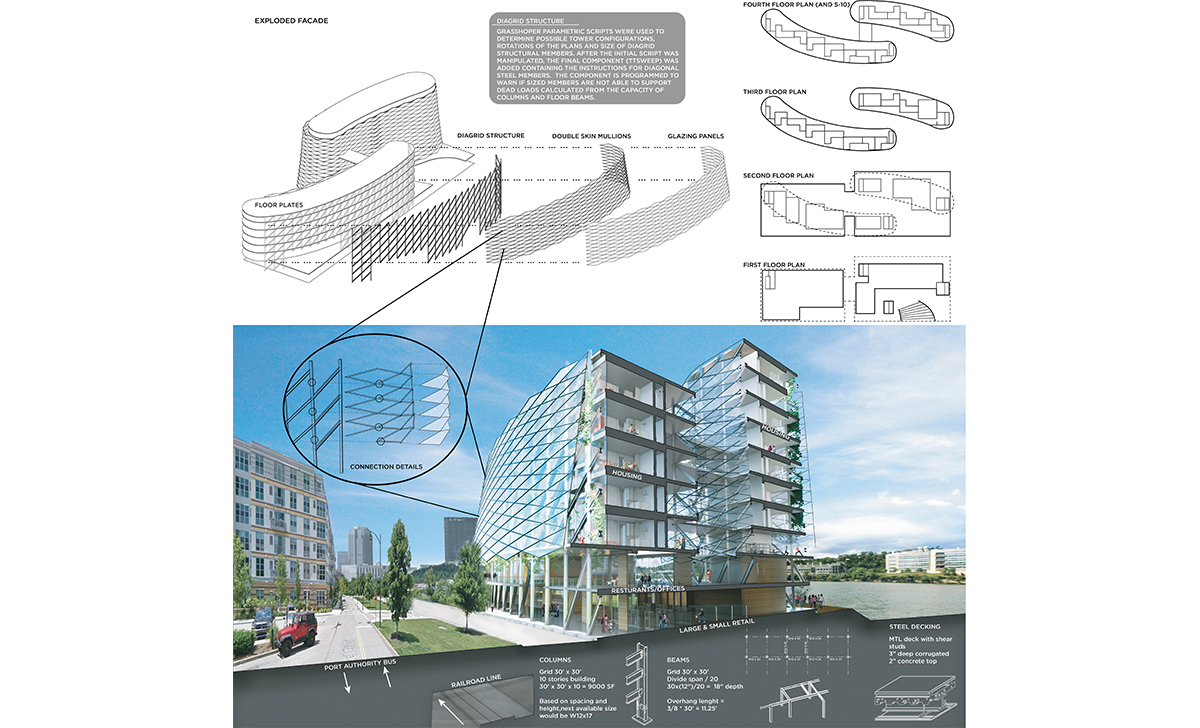2017-2018 Steel Competition Top Ten For Student Winners
Honorable Mention: Affordable Housing
Alin Codreanu, Stephanie Kortman, & Kirk Paisley
Project Description
Housing as currently constructed is not sustainable. To show this, consider the following: housing sizes are averaging the largest in history and costs are reaching 50% of the average income. Our skilled labor force is limited, while building materials and energy are dwindling. In response, the Airscraper proposes an urban architecture that focuses on adaptable multi-generational housing within a parametric steel envelope crafted to enhance the quality of life.
Although Airscrapers can be of value in any setting, the designers chose Pittsburgh as the site for the first version due to mapping of steel manufacturing plants and pollution zones. This combined with an overlap of existing zones of affordable housing to locate the project so as to not reinforce the cycle of poverty.
The formal shape of the building was determined through rigorous wind tests, defining wind eddies that funnel polluted air into exterior and interior air gardens located throughout the structure. The interior air garden housed in the double skin facade cleans the air of toxins allowing residents to open their windows to cleaned air.
Units are crafted to adapt to the ever changing family unit and allow aging-in-place in the most efficient footprint at each life phase – maximizing the usage of residential program space.
Steel design is witnessing a financial stress in terms of unique shapes, costs of production, and available raw materials. To keep manufacturing efficient and cost effective we have taken an iterative approach using parametric software to produce a solution with the least amount of unique steel shapes. Our diagrid system on the perimeter of the building, coupled with vertical columns inside the core, achieved our goal.
Through adaptability and efficiency we are able to keep the cost of the base project elements down while investing the remaining available resources back into the occupants.

 Study Architecture
Study Architecture  ProPEL
ProPEL 